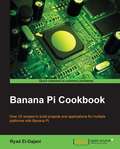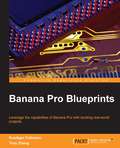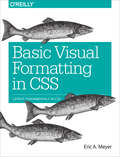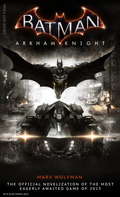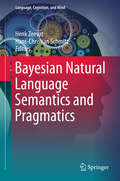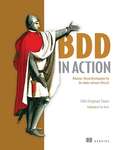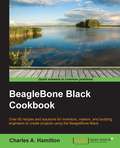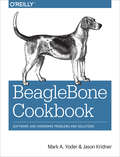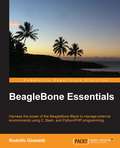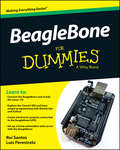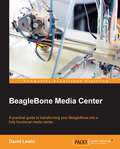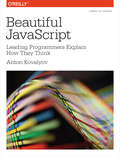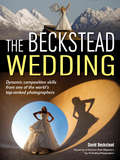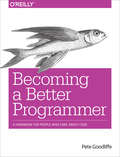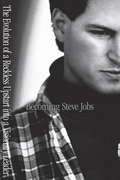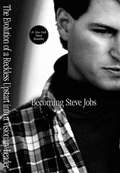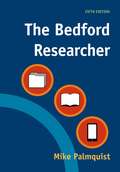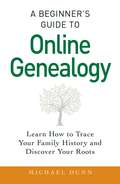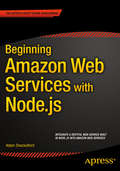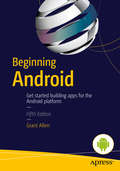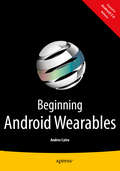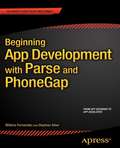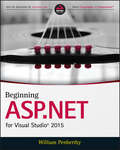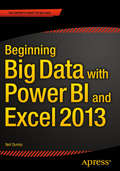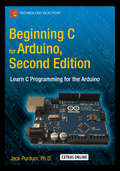- Table View
- List View
Banana Pi Cookbook
by Ryad El-DajaniThis book is intended for anybody who wants to learn how they can utilize the capabilities of the Banana Pi to its full potential. It's full of step-by-step guides and detailed descriptions for the whole range of possibilities in a language that is appropriate for computer enthusiasts and experts alike. It would be helpful to have a basic knowledge of Unix-like operating systems or programming, but no prior experience is required as every concept is explained in the appropriate sections.
Banana Pro Blueprints
by Tony Zhang Ruediger FollmannLeverage the capability of Banana Pi with exciting real-world projects About This Book * Delve into the expanse of Banana Pi's self-managing functionalities and develop real-world projects * Gain hands-on experience of developing various wireless, multimedia, robotic, and sensor-based applications with Banana Pi * Develop your applications using Banana Pi through a project-based approach Who This Book Is For This book is designed for those who are interested in exploring the capabilities of Banana Pro. Basic know-how of Linux and embedded systems would be an added advantage. What You Will Learn * Remotely connect to Banana Pro and program the embedded board * Use Banana Pro as a hotspot or provide an AirPlay server for wireless audio transmission * Find out about the different programming languages that can be used with Banana Pro * Build and program your own multimedia centre in order to watch television and movies * Connect peripherals such as a camera, LCD, or hard disk to Banana Pro * Manage and regulate your Linux system with Banana Pro * Stream music wirelessly from your mobile phone to Banana Pro In Detail This book follows a tactical plan that will guide you through the implementation of Banana Pro and its configurations. You will then learn the various programming languages used with Banana Pi with the help of examples. In no time at all, you'll be working on a wireless project that implements AirPlay servers, hotspots, and so on. Following this, you'll develop a retro-style arcade kiosk game. Then we'll move on to explore the multimedia features of Banana Pro by designing and building an enclosure for it. After this, you'll learn to build a remote-controlled smart car and we'll examine how to control a robotic arm. The book will conclude with the creation of a home sensor system that has the ability to expand or shrink to suit any home. Style and approach This book follows a project-based approach that covers the most important features of Banana Pro. Every chapter dives into the practical side of the implementation.
Basic Visual Formatting in CSS
by Eric A. MeyerSome aspects of the CSS formatting model may seem counterintuitive at first, but as you'll learn in this practical guide, the more you work with these features, the more they make sense. Author Eric Meyer gives you a good grounding in CSS visual rendering, from element box rules and concepts to the specifics of managing tricky layouts for block-level and inline elements.Short and sweet, this book is an excerpt from the upcoming fourth edition of CSS: The Definitive Guide. When you purchase either the print or the ebook edition of Basic Visual Formatting in CSS, you'll receive a discount on the entire Definitive Guide once it's released. Why wait? Learn how to bring life to your web pages now.Learn the details of element box types, including block, inline, inline-block, list-item, and run-in boxesChange the type of box an element generates, from inline to block, or list-item to inlineDive into the complexities of horizontal and vertical block-box formattingExplore key concepts of inline layout: anonymous text, em box, content area, leading, inline box, and line boxUnderstand formatting differences between nonreplaced and replaced inline elements
Batman Arkham Knight: The Official Novelization
by Marv WolfmanGotham City is in chaos as the criminal organizations run wild, seeking to fill the void left by the death of the Joker. When the Scarecrow threatens to unleash a toxin that will kill scores of innocents, the result is uncontrollable panic.TM & (c) DC Comics. (s15)
Bayesian Natural Language Semantics and Pragmatics (Language, Cognition, and Mind #2)
by Henk Zeevat Hans-Christian SchmitzThe contributions in this volume focus on the Bayesian interpretation of natural languages, which is widely used in areas of artificial intelligence, cognitive science, and computational linguistics. This is the first volume to take up topics in Bayesian Natural Language Interpretation and make proposals based on information theory, probability theory, and related fields. The methodologies offered here extend to the target semantic and pragmatic analyses of computational natural language interpretation. Bayesian approaches to natural language semantics and pragmatics are based on methods from signal processing and the causal Bayesian models pioneered by especially Pearl. In signal processing, the Bayesian method finds the most probable interpretation by finding the one that maximizes the product of the prior probability and the likelihood of the interpretation. It thus stresses the importance of a production model for interpretation as in Grice's contributions to pragmatics or in interpretation by abduction.
BDD in Action: Behavior-Driven Development for the whole software lifecycle
by John SmartSummaryBDD in Action teaches you the Behavior-Driven Development model and shows you how to integrate it into your existing development process. First you'll learn how to apply BDD to requirements analysis to define features that focus your development efforts on underlying business goals. Then, you'll discover how to automate acceptance criteria and use tests to guide and report on the development process. Along the way, you'll apply BDD principles at the coding level to write more maintainable and better documented code.Purchase of the print book includes a free eBook in PDF, Kindle, and ePub formats from Manning Publications.About the TechnologyYou can't write good software if you don't understand what it's supposed to do. Behavior-Driven Development (BDD) encourages teams to use conversation and concrete examples to build up a shared understanding of how an application should work and which features really matter. With an emerging body of best practices and sophisticated new tools that assist in requirement analysis and test automation, BDD has become a hot, mainstream practice.About the BookBDD in Action teaches you BDD principles and practices and shows you how to integrate them into your existing development process, no matter what language you use. First, you'll apply BDD to requirements analysis so you can focus your development efforts on underlying business goals. Then, you'll discover how to automate acceptance criteria and use tests to guide and report on the development process. Along the way, you'll apply BDD principles at the coding level to write more maintainable and better documented code. No prior experience with BDD is required.What's InsideBDD theory and practiceHow BDD will affect your teamBDD for acceptance, integration, and unit testingExamples in Java, .NET, JavaScript, and moreReporting and living documentationAbout the AuthorJohn Ferguson Smart is a specialist in BDD, automated testing, and software lifecycle development optimization. Table of ContentsPART 1: FIRST STEPSBuilding software that makes a differenceBDD—the whirlwind tourPART 2: WHAT DO I WANT? DEFINING REQUIREMENTS USING BDDUnderstanding the business goals: Feature Injection and related techniquesDefining and illustrating featuresFrom examples to executable specificationsAutomating the scenariosPART 3: HOW DO I BUILD IT? CODING THE BDD WAYFrom executable specifications to rock-solid automated acceptance testsAutomating acceptance criteria for the UI layerAutomating acceptance criteria for non-UI requirementsBDD and unit testingPART 4: TAKING BDD FURTHERLiving Documentation: reporting and project managementBDD in the build process
BeagleBone Black Cookbook
by Charles A. HamiltonOver 70 recipes and solutions for inventors, makers, and budding engineers to create projects using the BeagleBone Black About This Book * Learn how to develop applications with the BeagleBone Black and open source Linux software * Sharpen your expertise in making sophisticated electronic devices * Explore the BeagleBone Black with this easy-to-succeed recipe format Who This Book Is For If you are a hardware, Linux, and/or microcomputing novice, or someone who wants more power and possibilities with product prototypes, electronic art projects, or embedded computing experiments, then this book is for you. It is for Internet of Things enthusiasts who want to use more sophisticated hardware than the Raspberry Pi or the Arduino can provide. Whether you are an engineering student, a DIYer, an inventor, or an advanced electronics enthusiast, this book delivers accessible, compelling instructions for using an advanced microcomputing platform. What You Will Learn * Set up and run the BeagleBone Black for the first time * Learn the basics of microcomputing and Linux using the command line and easy kernel mods * Make introductory projects with Python, JavaScript, BoneScript, and Node.js * Explore physical computing and simple circuits using buttons, LEDs, sensors, and motors * Discover the unique features of the BeagleBone Black and its real-time computing functions * Build intermediate level audio and video applications * Assemble draft prototypes for wearable and Internet of Things devices In Detail With dozens of how-tos, this book kicks off with the basic steps for setting up and running the BeagleBone Black for the first time, from connecting the necessary hardware and using the command line with Linux commands to installing new software and controlling your system remotely. Following these recipes, more advanced examples take you through scripting, debugging, and working with software source files, eventually working with the Linux kernel. Subsequently, you will learn how to exploit the board's real-time functions. We will then discover exciting methods for using sound and video with the system before marching forward into an exploration of recipes for building Internet of Things projects. Finally, the book finishes with a dramatic arc upward into outer space, when you explore ways to set up test recipes for building a project on board a small satellite's payload. Style and approach This comprehensive recipe book deconstructs a complex, often confusing piece of technology, and transforms it to become accessible and fun with snappy, unintimidating prose, and extensive easy-to-succeed instructions.
BeagleBone Cookbook
by Jason Kridner Mark A. YoderBeagleBone is an inexpensive web server, Linux desktop, and electronics hub that includes all the tools you need to create your own projects--whether it's robotics, gaming, drones, or software-defined radio. If you're new to BeagleBone Black, or want to explore more of its capabilities, this cookbook provides scores of recipes for connecting and talking to the physical world with this credit-card-sized computer.All you need is minimal familiarity with computer programming and electronics. Each recipe includes clear and simple wiring diagrams and example code to get you started. If you don't know what BeagleBone Black is, you might decide to get one after scanning these recipes.Learn how to use BeagleBone to interact with the physical worldConnect force, light, and distance sensorsSpin servo motors, stepper motors, and DC motorsFlash single LEDs, strings of LEDs, and matrices of LEDsManage real-time input/output (I/O)Work at the Linux I/O level with shell commands, Python, and CCompile and install Linux kernelsWork at a high level with JavaScript and the BoneScript libraryExpand BeagleBone's functionality by adding capesExplore the Internet of Things
BeagleBone Essentials
by Rodolfo GiomettiIf you are a developer with some hardware or electrical engineering experience who wants to learn how to use embedded machine-learning capabilities and get access to a GNU/Linux device driver to collect data from a peripheral or to control a device, this is the book for you.
BeagleBone For Dummies
by Lu?s Miguel Costa Perestrelo Rui SantosThe definitive, easy-to-use guide to the popular BeagleBoneboard BeagleBone For Dummies is the definitive beginner's guideto using the popular BeagleBone board to learn electronics andprogramming. Unlike other books that require previous knowledge ofelectronics, Linux, and Python, this one assumes you know nothingat all, and guides you step-by-step throughout the process ofgetting acquainted with your BeagleBone Original or BeagleBoneBlack. You'll learn how to get set up, use the software, build thehardware, and code your projects, with plenty of examples to walkyou through the process. You'll move carefully through your firstBeagleBone project, then get ideas for branching out from there tocreate even better, more advanced programs.The BeagleBone is a tiny computer board - about the sizeof a credit card - that has all the capability of a desktop.Its affordability and ease of use has made it popular amonghobbyists, hardware enthusiasts, and programmers alike, and it'stime for you to join their ranks as you officially dive into theworld of microcomputers. This book removes the guesswork from usingthe popular BeagleBone board and shows you how to get up andrunning in no time.Download the operating system and connect your BeagleBoneLearn to navigate the desktop environmentStart programming with Python and BonescriptBuild your first project, and find plans for many moreTo learn BeagleBone, you could spend hours on the Internet andstill never find the information you need, or you can geteverything you need here. This book appeals to all new andinexperienced hobbyists, tinkerers, electronics gurus, hackers,budding programmers, engineers, and hardware geeks who want tolearn how to get the most out of their powerful BeagleBone.
BeagleBone Media Center
by David LewinWhether you are a hobbyist or a professional, this book will get you fully equipped to resolve the most commonly occurring media-related challenges. If you want to expand your horizons beyond lighting an LED and push the limits of your board, this is just the book for you. Working knowledge of BeagleBone is assumed.
Beautiful JavaScript
by Anton KovalyovIn the past few years, JavaScript has rapidly expanded beyond the browser and today we use it for all kind of projects: from powerful web applications to web servers to making desktop games run in your browser. Beautiful JavaScript offer case studies that reveal unusual, carefully crafted solutions found by top JavaScript developers. You'll be able to look take a look at the whole JavaScript ecosystem through the eyes of top experts and see how they approach their most interesting problems.After reading this book, you'll have a better grasp on how to approach your daily programming challenges and how to pick the best solution for the problem.
The Beckstead Wedding
by David BecksteadAmerican Photo magazine named David Beckstead one of the Top Ten Wedding Photographers in the World. He's an industry leader with a reputation for quality work and giving back to the industry. In this book, readers will get a behind-the-scenes look at Beckstead's unique, stylized wedding images, learning the tips, tricks and insights that have thrust him into the wedding industry's spotlight. From straight talk about camera work (exposure settings, lens selection, camera angle, and more) to lighting (indoors and outdoors, working in an array of conditions), to composition (using color, visual shapes, leading lines, contrast, and more), Beckstead shows readers how to maximize their skills while learning to see and create more stylized photographs, avoid pitfalls, cultivate a distinctive look, and create high-impact photographs that will send waves of excitement to prospective clients who know what they want and are willing to go the distance (financially and geographically) to get it.
Becoming a Better Programmer
by Pete GoodliffeIf you're passionate about programming and want to get better at it, you've come to the right source. Code Craft author Pete Goodliffe presents a collection of useful techniques and approaches to the art and craft of programming that will help boost your career and your well-being.Goodliffe presents sound advice that he's learned in 15 years of professional programming. The book's standalone chapters span the range of a software developer's life--dealing with code, learning the trade, and improving performance--with no language or industry bias. Whether you're a seasoned developer, a neophyte professional, or a hobbyist, you'll find valuable tips in five independent categories:Code-level techniques for crafting lines of code, testing, debugging, and coping with complexityPractices, approaches, and attitudes: keep it simple, collaborate well, reuse, and create malleable codeTactics for learning effectively, behaving ethically, finding challenges, and avoiding stagnationPractical ways to complete things: use the right tools, know what "done" looks like, and seek help from colleaguesHabits for working well with others, and pursuing development as a social activity
Becoming Steve Jobs
by Rick Tetzeli Brent SchlenderThere have been many books--on a large and small scale--about Steve Jobs, one of the most famous CEOs in history. But this book is different from all the others. Becoming Steve Jobs takes on and breaks down the existing myth and stereotypes about Steve Jobs. The conventional, one-dimensional view of Jobs is that he was half-genius, half-jerk from youth, an irascible and selfish leader who slighted friends and family alike. Becoming Steve Jobs answers the central question about the life and career of the Apple cofounder and CEO: How did a young man so reckless and arrogant that he was exiled from the company he founded become the most effective visionary business leader of our time, ultimately transforming the daily life of billions of people? Drawing on incredible and sometimes exclusive access, Schlender and Tetzeli tell a different story of a real human being who wrestled with his failings and learned to maximize his strengths over time. Their rich, compelling narrative is filled with stories never told before from the people who knew Jobs best, and who decided to open up to the authors, including his family, former inner circle executives, and top people at Apple, Pixar and Disney, most notably Tim Cook, Jony Ive, Eddy Cue, Ed Catmull, John Lasseter, Robert Iger and many others. In addition, Brent knew Jobs personally for 25 years and draws upon his many interviews with him, on and off the record, in writing the book. He and Rick humanize the man and explain, rather than simply describe, his behavior. Along the way, the book provides rich context about the technology revolution we all have lived through, and the ways in which Jobs changed our world. Schlender and Tetzeli make clear that Jobs's astounding success at Apple was far more complicated than simply picking the right products: he became more patient, he learned to trust his inner circle, and discovered the importance of growing the company incrementally rather than only shooting for dazzling game-changing products. A rich and revealing account that will change the way we view Jobs, Becoming Steve Jobs shows us how one of the most colorful and compelling figures of our times was able to combine his unchanging, relentless passion with a more mature management style to create one of the most valuable and beloved companies on the planet.From the Hardcover edition.
Becoming Steve Jobs: The Evolution of a Reckless Upstart into a Visionary Leader
by Rick Tetzeli Brent SchlenderThere have been many books--on a large and small scale--about Steve Jobs, one of the most famous CEOs in history. But this book is different from all the others. Becoming Steve Jobs takes on and breaks down the existing myth and stereotypes about Steve Jobs. The conventional, one-dimensional view of Jobs is that he was half-genius, half-jerk from youth, an irascible and selfish leader who slighted friends and family alike. Becoming Steve Jobs answers the central question about the life and career of the Apple cofounder and CEO: How did a young man so reckless and arrogant that he was exiled from the company he founded become the most effective visionary business leader of our time, ultimately transforming the daily life of billions of people? Drawing on incredible and sometimes exclusive access, Schlender and Tetzeli tell a different story of a real human being who wrestled with his failings and learned to maximize his strengths over time. Their rich, compelling narrative is filled with stories never told before from the people who knew Jobs best, and who decided to open up to the authors, including his family, former inner circle executives, and top people at Apple, Pixar and Disney, most notably Tim Cook, Jony Ive, Eddy Cue, Ed Catmull, John Lasseter, Robert Iger and many others. In addition, Brent knew Jobs personally for 25 years and draws upon his many interviews with him, on and off the record, in writing the book. He and Rick humanize the man and explain, rather than simply describe, his behavior. Along the way, the book provides rich context about the technology revolution we all have lived through, and the ways in which Jobs changed our world. Schlender and Tetzeli make clear that Jobs's astounding success at Apple was far more complicated than simply picking the right products: he became more patient, he learned to trust his inner circle, and discovered the importance of growing the company incrementally rather than only shooting for dazzling game-changing products. A rich and revealing account that will change the way we view Jobs, Becoming Steve Jobs shows us how one of the most colorful and compelling figures of our times was able to combine his unchanging, relentless passion with a more mature management style to create one of the most valuable and beloved companies on the planet.
The Bedford Researcher
by Mike PalmquistTech-savvy and student-friendly, The Bedford Researcher addresses the kinds of writing students actually do and the kinds of sources they actually use, from multimodal projects and oral presentations to Web sites and digital databases. The Bedford Researcher strips away the complexities of research writing across the disciplines and offers the practical help students need to write with confidence while integrating electronic sources and tools into each stage of the process.
A Beginner's Guide to Online Genealogy: Learn How to Trace Your Family History and Discover Your Roots
by Michael DunnUse online tools to discover your family's history!Today, with millions of records available online, it's never been easier to chart your family history and discover your roots. But with hundreds of ancestors just a click away, where do you start? This book guides you through the genealogy process with easy-to-understand strategies for researching family roots online. Featuring detailed explanations, each chapter teaches you how to navigate popular genealogy websites, decipher census data and other online records, and connect with other family members to share your findings.Complete with tips on using free databases and genealogy apps, A Beginner's Guide to Online Genealogy has everything you need to find long-lost relatives and map your family tree!
Beginning Amazon Web Services with Node.js
by Adam ShackelfordBeginning Amazon Web Services with Node. js teaches any novice Node. js developer to configure, deploy, and maintain scalable small to large scale Node. js applications in Amazon Web Services. Hosting a Node. js application in a production environment usually means turning to PaaS hosting, but this approach brings problems. Deploying Node. js directly to AWS solves the problems you encounter in these situations, enabling you to cut out the middle man. You will begin with a basic RESTful web service in Node. js, using the popular Express. js framework, pre-built and ready to run in your local environment. You will be introduced to the most powerful tools in AWS, and learn how to configure your project to take advantage of them. You will be guided through the steps of getting the various key components to work together on AWS. Through code samples using the AWS JavaScript SDK and tutorials in the AWS console, you will gain the knowledge to incorporate secure user authentication, server auto-scaling, a load balancer, CDN, customized caching behavior, and outage monitoring. Node. js is single-threaded, and designed to run high input / high output applications, making it ideal for the cloud environment. If your main task is handling a high volume of requests over HTTP / the web, it will scale very well in proportion to the computing power you allocate to it. Amazon Web Services offers a broad set of services that help organizations move faster, lower costs, and scale applications. Trusted by the largest enterprises and start-ups alike, AWS powers a wide variety of workloads across a broad spectrum. If leveraged properly, you can build a Node. js app on AWS which can automatically power itself up to handle a massive volume of traffic, and then scale back down to a lighter configuration when user demand has dropped. Amazon Web Services offers a broad set of services that help organizations move faster, lower costs, and scale applications. Get started with Node. js and AWS using this book today. What you'll learn â-- Using AWS Opsworks to architect and configure a secure web application built for hosting in the cloud. â-- Integrating AWS Cloudwatch, SES, and other AWS services into your code. â-- Using AWS Route 53 to configure your domain to use a load balancer, CDN, and other performance-enhancing services into your application. â-- Deploying with AWS Opsworks and using AWS services to monitor, scale, and maintain your application. Who this book is for This book is intended for a beginner/novice Node. js developer who has traditionally relied on PaaS services such as Heroku or Parse to host their web applications. This book aims to empower the reader to work directly in AWS, in order to manage their own infrastructure. Hosting a Node. js application in a production environment usually means turning to PaaS hosting such as Heroku or AppFog, but this approach brings problems. Deploying Node. js directly to AWS solves the problems you encounter in these situations, enabling you to cut out the middle man. If leveraged properly, you can build a Node. js app on AWS which can automatically power itself up to handle a massive volume of traffic, and then scale back down to a lighter configuration when user demand has dropped. Table of Contents 1. Getting Started with Amazon Web Services 2. Working with AWS OpsWorks 3. OpsWorks Part II: Databases and Scaling 4. CloudFront and DNS Management 5. Simple Storage Service and Content Delivery 6. Simple Email Service 7. Monitoring the Application 8. Securing The Application
Beginning Android: Develop For Android Using Html5, Css3, And Javascript
by Grant AllenGet started in creating marketable apps for the burgeoning Android market. Begin your journey by learning the essentials of programming for phones and tables that are built around Google's wildly-successful Android platform. Beginning Android, Fifth Edition is fresh with details on the latest iteration of the Android 5 and earlier versions. Google's Android operating-system has taken the industry by storm, going from its humble beginnings as a smartphone operating system to its current status as a platform for apps that run across a gamut of devices from phones to tablets to netbooks to televisions, and the list is sure to grow. Smart developers are not sitting idly by in the stands, but are jumping into the game of creating innovative and salable applications for this fast-growing, mobile- and consumer-device platform. If you're not in the game yet, now is your chance! Begin at the beginning by installing the tools and compiling a skeleton app. Move through creating layouts, employing widgets, taking user input, and giving back results. Soon you'll be creating innovative applications involving multi-touch, multi-tasking, and more! You'll be drawing data live from the Internet using web services and delighting your customers with life-enhancing apps. Not since the PC era first began has there been this much opportunity for the common developer. What are you waiting for? Grab your copy of Beginning Android and get started! What you'll learn Develop Java-based mobile applications and games for a wide range of phones and devices. Create user interfaces using WebKit and the Android widget framework. Incorporate activities, services, content providers, and broadcast receivers into your applications. Support multiple Android versions, multiple screen sizes, and other device-specific characteristics. Build and experience the array of new WebM video and other multimedia APIs for Android and more. Who this book is for Beginning Android is aimed at programmers new to Android application development who desire to create marketable applications for the burgeoning market of smartphone, tablet, and other Android device users. Table of Contents Part I: Get Android and Get Coding! 1. Welcome to Android 2. Ready, Set, Code! 3. Inside Your First Android Project 4. Changing and Improving Your Project Part II: Activities and the User Interface 5. Layouts and UI Design 6. Android Widgets 7. Containers, Lists, and Adapters 8. Input Methods, Fonts, Menus, and Dialogs 9. The Action Bar 10. The Lifecycle of an Activity III: A World of Wonderful Devices and Screens 11. Devices of All Sizes 12. Phone Calls! 13. Audio and Sound Support 14. Image and Video Handling 15. A Device of Devices IV: Working with Resources and Services 16. Working with Files 17. Working with Local Databases 18. Working with Preferences 19. Controlling Security and Permissions 20. More Power from Java Libraries 21. Using External Libraries 22. Calling on Services 23. Generating Notifications
Beginning Android Wearables: With Android Wear and Google Glass SDKs
by Andres CalvoBeginning Android Wearables gives you the skills you need to make effective apps for Android Wear-based smartwatches, fitness bracelets, connected home wearable controllers, and Google Glass. Delight your users by giving them access to the information they'll need at the tips of their fingers. This book is very practical and contains many examples that not only show you how to write code for Glass and Android Wear, but also demonstrate how to apply this code in the context of an app. What you'll learn Build notifications for handheld apps that are automatically shared with wearables, and learn to customize these notifications Create apps that run directly on Android Wear devices and leverage the Android Wear SDK Use the wearable UI library to build effective user interfaces for Android Wear Use the wearable data layer API to share and synchronize data between a handheld device and Android Wear Build custom watch faces for Android Wear Build Glassware (that is, apps for Glass) using the Glass Development Kit (GDK) Utilize location providers and orientation sensors to build contextually sensitive apps Who this book is for This book only requires basic knowledge of Android programming. Prior to this book, you should have read or are at least comfortable with Android after using Apress tutorials, Android Apps for Absolute Beginners or Beginning Android. Table of Contents Part I - Introduction 1. Introducing Android Wearables Part II - Notifications 2. Reviewing Notifications for Android 3. Customizing Notifications for Wearables Part III - Android Wear 4. Running Apps Directly on Android Wear 5. Android Wear UI Essentials 6. The Wearable Data Layer API 7. Creating Custom Watch Faces Part IV - Google Glass 8. Running Apps Directly on Glass 9. Glass User Interface Essentials 10. Voice and Input 11. The Camera: Taking Pictures and Recording Video Part V - Android Wear and Glass 12. Location and Orientation
Beginning App Development with Parse and Phonegap
by Wilkins Fernandez Stephan AlberBeginning App Development with Parse and PhoneGap teaches you how to start app development with Parse and PhoneGap: free and open source software. Using the building block languages of the web--HTML, JavaScript, and CSS--you'll be on your way to creating a fully working product with minimal effort as fast as possible. With over 25 years' of combined experience, the authors make daunting tasks seem trivial. There is no book on the market that can take you from designer to developer faster. Using Facebook's Parse as backend service, and Adobe's PhoneGap (or Cordova) as a mobile development framework, building a highly customizable application is easier than you can imagine. A basic understanding of JavaScript, HTML, and CSS is not required, but it will help you pick up concepts faster. This book is geared toward a designer who wants to explore the world of application development. If you do not know anything about design, that's OK! We will walk you through step by step on how to build your first native iOS or Android app in the fastest and easiest way possible. Using free and open source software, this book will get you up and running quickly and efficiently--start using Parse and PhoneGap today with this key title. What you'll learn â-- How to get your environment set up for application development â-- Create an online Data Storage using Parse â-- Essential basics of Querying a Database: Create, Remove, Update and Delete Data â-- Use advanced native phone features like geolocation and camera access â-- How to organize your code for maximum efficiency â-- Release your application to the world online Who this book is for Beginning App Development with Parse and PhoneGap is intended for a designer or novice developer that wants to take their skills to the next level. You do not need deep knowledge of HTML, CSS, or JavaScript, but you'll be working with all of them. Using free and open source software - Parse and PhoneGap - you'll be able to get started straight away. Table of Contents 1. Introduction 2. Beginning PhoneGap 3. Beginning Parse 4. Tools and Helpers 5. Facebook API 6. The Messenger Application 7. User Registration with Parse 8. Messages 9. Location Services 10. Map Views 11. Accessing and Sharing Photos 12. Network Connection Status
Beginning ASP.NET for Visual Studio 2015
by William PenberthyThe complete guide to the productivity and performance enhancements in ASP.NET Beginning ASP.NET for Visual Studio 2015 is your ultimate guide to the latest upgrade of this historically popular framework. Fully updated to align with the vNext release, this new edition walks you through the new tools and features that make your workflow smoother and your applications stronger. You'll get up to speed on the productivity and performance improvements, and learn how Microsoft has committed itself to more continuous innovation by increasing its release cadence for all products and services going forward. Coverage includes Async-aware debugging, ADO.NET idle connection resiliency, managed return value inspection, ASP.NET app suspension, on-demand large object heap compaction, multi-core JIT and more. The news of an off-cycle update to ASP.NET came as a surprise, but its announcement garnered cheers at the 2014 Microsoft BUILD conference. This guide shows you what all the fuss is about, and how Microsoft overhauled the latest ASP.NET release. Get acquainted with the new developer productivity features Master the new tools that build better applications Discover what's new in Windows Store app development Learn how Microsoft fixed the issues that kept you from v5 Over 38 million websites are currently using ASP.NET, and the new upgrade is already leading to increased adoption. Programmers need to master v6 to remain relevant as web development moves forward. Beginning ASP.NET for Visual Studio 2015 walks you through the details, and shows you what you need to know so you can get up and running quickly.
Beginning Big Data with Power BI and Excel 2013: Big Data Processing and Analysis Using PowerBI in Excel 2013
by Neil DunlopIn Beginning Big Data with Power BI and Excel 2013, you will learn to solve business problems by tapping the power of Microsoft''s Excel and Power BI to import data from NoSQL and SQL databases and other sources, create relational data models, and analyze business problems through sophisticated dashboards and data-driven maps. While Beginning Big Data with Power BI and Excel 2013 covers prominent tools such as Hadoop and the NoSQL databases, it recognizes that most small and medium-sized businesses don''t have the Big Data processing needs of a Netflix, Target, or Facebook. Instead, it shows how to import data and use the self-service analytics available in Excel with Power BI. As you''ll see through the book''s numerous case examples, these tools--which you already know how to use--can perform many of the same functions as the higher-end Apache tools many people believe are required to carry out in Big Data projects. Through instruction, insight, advice, and case studies, Beginning Big Data with Power BI and Excel 2013 will show you how to: Import and mash up data from web pages, SQL and NoSQL databases, the Azure Marketplace and other sources. Tap into the analytical power of PivotTables and PivotCharts and develop relational data models to track trends and make predictions based on a wide range of data. Understand basic statistics and use Excel with PowerBI to do sophisticated statistical analysis--including identifying trends and correlations. Use SQL within Excel to do sophisticated queries across multiple tables, including NoSQL databases. Create complex formulas to solve real-world business problems using Data Analysis Expressions (DAX). What you''ll learn You will learn to: Use Excel and Power BI to do sophisticated data analytics on large data sets Import data from other sources into Excel Understand basic statistical techniques Analyze trends Perform complex calculation using DAX Present results using easy-to-understand visualizations such as maps Frame and solve real-world business problems through big data analysis Who this book is for Beginning Big Data with Power BI and Excel 2013 is designed for anyone who uses data analytics to make business decisions, especially those in small and medium-sized businesses. Table of Contents Introduction Chapter 1: Tools for Big Data Intake, Processing, and Analysis Chapter 2: Excel as a Database and Data Aggregator Chapter 3: Pivot Tables and Pivot Charts Chapter 4: Data Models Chapter 5: SQL in Excel Chapter 6: NoSQL Databases in Excel Chapter 7: Statistical Analysis in Excel Chapter 8: Data Analysis Expressions Chapter 9: Reports and Dashboards Chapter 10: Data Visualizations Chapter 11: Summary and Review
Beginning C for Arduino: Learn C Programming for the Arduino
by Jack PurdumBeginning C for Arduino, Second Edition is written for those who have no prior experience with microcontrollers or programming but would like to experiment and learn both. Updated with new projects and new boards, this book introduces you to the C programming language, reinforcing each programming structure with a simple demonstration of how you can use C to control the Arduino family of microcontrollers. Author Jack Purdum uses an engaging style to teach good programming techniques using examples that have been honed during his 25 years of university teaching. Beginning C for Arduino, Second Edition will teach you: The C programming language How to use C to control a microcontroller and related hardware How to extend C by creating your own libraries, including an introduction to object-oriented programming During the course of the book, you will learn the basics of programming, such as working with data types, making decisions, and writing control loops. You'll then progress onto some of the trickier aspects of C programming, such as using pointers effectively, working with the C preprocessor, and tackling file I/O. Each chapter ends with a series of exercises and review questions to test your knowledge and reinforce what you have learned. What you'll learn The syntax of the C programming language as defined for the Arduino Tried and true coding practices (applicable to any programming language) How to design, code, and debug programs that drive Arduino microcontrollers How to extend the functionality of C How to integrate low cost, off-the-shelf, hardware shields into your own projects Who this book is for The book is aimed at a complete novice with no programming background. It assumes no prior programming or hardware design experience and is written for creative and curious people who would like to blend a software and hardware learning experience into a single, enjoyable endeavor. Table of Contents Introduction to Arduino Microcontrollers Arduino C Data Types Decision Making in C Program Loops Functions in C Storage Classes and Scope Introduction to Pointers Using Pointers Effectively I/O Operations The C Preprocessor A Gentle Introduction to Object-Oriented Programming Arduino Libraries Arduino I/O Appendix A - Suppliers Appendix B - Hardware Components
